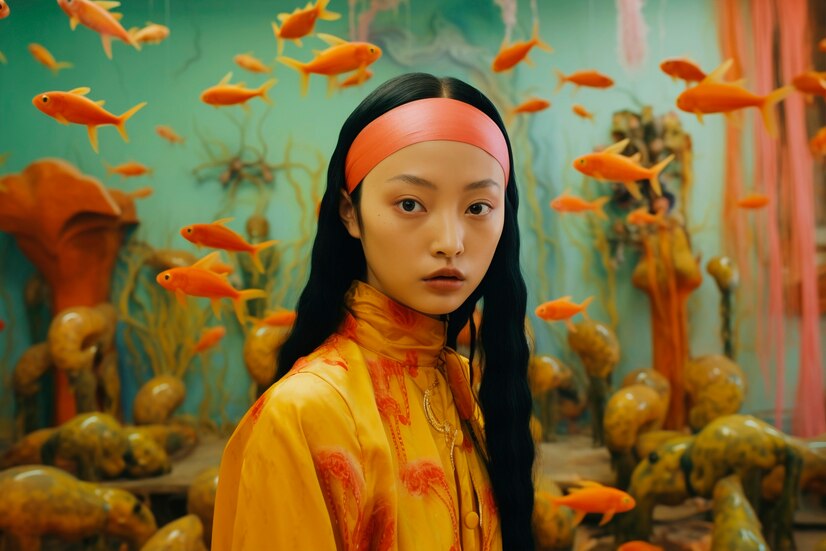Kainan hoshi modern culture is an influential figure whose creative output has significantly contributed to the evolution of modern culture. His works represent the delicate balance between preserving the essence of traditional practices while simultaneously embracing contemporary ideas. The fusion of these elements has made him a trailblazer in the arts, philosophy, and cultural discourse. Through his dynamic approach, Hoshi has become a beacon for the integration of the old with the new, creating a unique space for exploration and discussion. This article delves into his role in modern culture, examining the broader implications of his art, philosophy, and impact on society.
Who is Kainan Hoshi?
Early Life and Background
Kainan hoshi modern culture journey into the world of art and culture is as multifaceted as his work. Born into a family deeply rooted in tradition, his early life was influenced by the cultural practices and philosophies of his ancestors. Growing up in a region rich in folklore, rituals, and customs, Hoshi was exposed to the importance of maintaining cultural heritage. However, from a young age, he was equally fascinated by the possibilities of blending these traditional elements with new, innovative ideas.
His upbringing was a blend of two worlds: one firmly anchored in the traditions of his cultural background, and another driven by the curiosity to explore the unknown. This duality became the cornerstone of his artistic identity and philosophical outlook. Through a combination of formal education and personal exploration, Hoshi began to delve deeper into various cultural and artistic movements, combining influences from both the East and the West. His understanding of traditional values, alongside a growing interest in modernity, helped him create an artistic language that was both rooted in history and at the forefront of innovation.
A Cultural Ambassador
In addition to his artistic pursuits, Kainan Hoshi has become a cultural ambassador, bridging the gap between the past and present. As an advocate for the preservation of cultural traditions in the face of globalization, Hoshi’s work challenges the idea that modernity and tradition cannot coexist. His art, philosophy, and public lectures emphasize the importance of understanding and respecting the past while evolving to meet the needs of the future. By doing so, Hoshi has become a prominent figure in both the art world and cultural discourse.
The Influence of Kainan Hoshi on Modern Culture
Kainan Hoshi’s contributions have far-reaching effects on modern culture, shaping the way we view art, identity, and philosophy in a rapidly changing world. His unique perspective on blending the old with the new challenges conventional views, encouraging both individuals and communities to rethink how they relate to their cultural heritage. Below are some key areas where his influence is particularly notable.
1. Art and Aesthetics: A Fusion of Old and New
Hoshi’s work is an exemplary fusion of traditional aesthetics and modern techniques. Through his art, he manages to preserve and celebrate ancient cultural symbols, themes, and methods, while simultaneously pushing boundaries through the use of contemporary mediums. His paintings, sculptures, and digital works are infused with deep references to his cultural background, but they are not confined to the constraints of traditional art forms.
For example, in his artwork, Hoshi often employs ancient motifs such as lotus flowers, dragons, and geometric patterns. However, these symbols are not simply reproduced in their traditional form. Instead, Hoshi integrates them with new materials and cutting-edge technologies, including mixed media, augmented reality (AR), and video installations. This blending of styles and materials invites the audience to engage with the artwork in a novel way, merging the tactile nature of traditional art with the immersive quality of modern technologies.
In doing so, Hoshi’s work challenges the notion of what art can be. It shows that tradition does not have to be preserved in isolation; it can evolve and be reimagined in a contemporary context without losing its essence. This makes Hoshi’s work not only relevant to contemporary society but also a vital part of ongoing cultural dialogue.
2. Philosophy and Society: The Role of Tradition in Modern Life
While Hoshi’s art reflects the fusion of traditional and modern elements, his philosophical contributions delve deeper into the significance of these values in today’s fast-paced, technology-driven world. One of Hoshi’s primary philosophical tenets is the belief that modern society has much to gain by reconnecting with ancient philosophies. He argues that in our pursuit of progress and technological advancement, we often lose touch with the deeper, timeless truths that have guided civilizations for centuries.
Through his writings, speeches, and public lectures, Hoshi encourages society to reflect on core human values such as balance, respect, mindfulness, and humility—values that are deeply ingrained in many traditional cultures. In modern life, where everything is constantly changing and evolving, these ancient principles can provide a sense of stability and purpose. Hoshi’s philosophy also advocates for sustainability, not only in the physical environment but also in cultural practices and societal values. He encourages people to live mindfully, with an awareness of the historical context of their actions, which ultimately enhances the sense of connection to both their ancestors and the future generations.
3. Cultural Identity: The Globalization of Local Traditions
In today’s increasingly interconnected world, issues of cultural identity and heritage are more pressing than ever. As globalization brings diverse cultures into closer contact, there is often a tension between maintaining a local identity and embracing a globalized world. Hoshi’s work offers a thoughtful response to this dilemma, advocating for the preservation of cultural traditions while simultaneously encouraging openness to global influences.
Through his art, Hoshi highlights how cultural practices can evolve and adapt without losing their inherent meaning. He demonstrates that cultural identity is not a static construct but one that can grow and transform while staying connected to its roots. By incorporating global perspectives into his work, Hoshi shows that local traditions are not only important for maintaining a unique cultural identity but can also contribute to the larger global cultural conversation.
Hoshi’s work speaks to individuals and communities struggling with this balance between tradition and modernity. It offers a path toward cultural hybridity, where local practices are celebrated and preserved while engaging with the broader, more diverse world around us.
The Impact of Kainan Hoshi on Modern Art
Hoshi’s influence extends beyond the philosophical or cultural realms into the world of contemporary art, where his work challenges established conventions and pushes the boundaries of what is considered “art.”
1. Digital Art and Technology
One of the most significant aspects of Kainan Hoshi’s work is his integration of digital technologies into his artistic process. The rise of digital art has transformed the way artists engage with their audience and produce their work. Hoshi has embraced these advancements, incorporating virtual reality (VR), augmented reality (AR), and digital installations into his creations. This technology allows him to create immersive environments that engage viewers in new and interactive ways.
In his digital works, Hoshi often explores themes such as the passage of time, the preservation of cultural memory, and the fusion of traditional symbols with futuristic technology. Through virtual reality installations, for example, Hoshi invites the audience to walk through dynamic, evolving landscapes that reflect his cultural heritage, while simultaneously challenging conventional ideas about art and its role in society.
His work highlights the potential of technology to create meaningful and engaging experiences, redefining what art can be in the 21st century.
2. Global Influence: Expanding Beyond Borders
Kainan Hoshi’s reach extends far beyond the borders of his home country. His ability to merge local traditions with global perspectives has made his work particularly appealing in an increasingly globalized world. By exploring universal themes such as identity, culture, and technology, Hoshi’s art resonates with a wide range of viewers, regardless of their cultural background.
Hoshi’s art acts as a bridge between East and West, offering a unique perspective on the blending of cultural traditions across geographic and historical divides. Through his exhibitions and collaborations, Hoshi has helped to foster a greater understanding of how local cultures can contribute to the global art scene. His work challenges preconceived notions of cultural purity and encourages viewers to explore the richness that arises when diverse cultural elements come together.
Conclusion: The Enduring Legacy of Kainan Hoshi in Modern Culture
Kainan Hoshi’s legacy in modern culture is one of enduring relevance, rooted in his ability to integrate the old with the new. As an artist, philosopher, and cultural ambassador, Hoshi has demonstrated that tradition and modernity are not mutually exclusive but can coexist and enhance one another. His work continues to inspire individuals to reflect on their cultural heritage while also embracing the possibilities of the future. Through his art, Hoshi challenges us to think more critically about the role of culture, technology, and identity in shaping our modern world.
In a world where change is constant and often overwhelming, Kainan Hoshi’s approach to art and philosophy offers a refreshing reminder that the wisdom of the past can still guide us as we navigate the complexities of the present and future.
FAQs
1. Who is kainan hoshi modern culture?
Kainan Hoshi is a renowned artist and philosopher known for blending traditional cultural elements with modern techniques. He has become a prominent figure in global cultural conversations, advocating for the integration of heritage and innovation. His work is both an artistic journey and a philosophical exploration of identity, tradition, and modernity.
2. What is Kainan Hoshi’s artistic style?
Hoshi’s artistic style blends ancient cultural symbols, motifs, and spiritual themes with contemporary techniques such as digital media, mixed media, and interactive installations. His work combines the richness of traditional cultural practices with the innovative possibilities of modern technology, creating an immersive and dynamic experience for his audience.
3. How has Kainan Hoshi influenced modern culture?
Hoshi has influenced modern culture by demonstrating that tradition and modernity can coexist in harmony. His art and philosophy encourage individuals to reflect on their cultural heritage while embracing modern technology and global perspectives. He has sparked conversations about the preservation of cultural identity in a globalized world and the role of art in bridging historical divides.
4. What role does technology play in Kainan Hoshi’s work?
Technology plays a significant role in Hoshi’s work, especially through his use of digital art forms such as virtual reality (VR) and augmented reality (AR). These technologies enable Hoshi to create interactive and immersive experiences that invite the audience to engage with the artwork in new and meaningful ways. Hoshi’s use of technology underscores the transformative potential of modern media in the realm of art.
5. Why is Kainan Hoshi important for cultural preservation?
Kainan Hoshi is important for cultural preservation because he demonstrates that traditional cultural practices can evolve while maintaining their core values. His work encourages individuals and communities to adapt to the changing world without losing their cultural identity.






